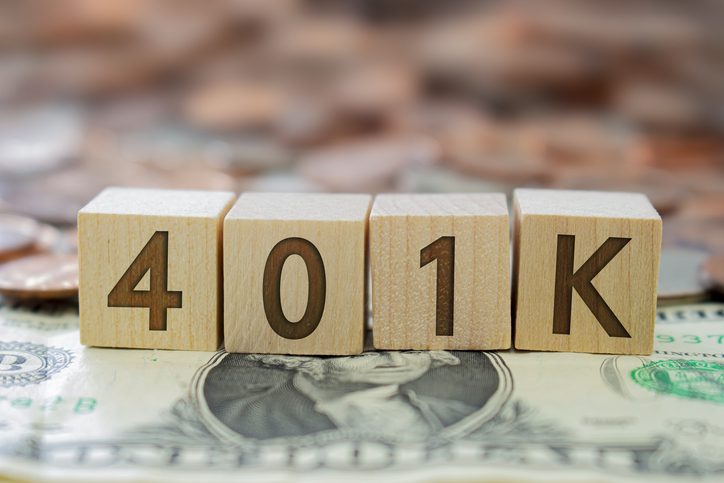Financial planners often recommend aiming for roughly three times your annual salary in retirement savings by the time you reach 45. At the same time, your mid-forties are a turning point when compounding can still work in your favor. The decisions you make now, whether you’re on track or catching up, will affect your nest egg. And a retirement plan could help you hit key savings benchmarks, choose contribution strategies and estimate your growth potential.
How Much Should I Have in My 401(k) at Age 45?
Financial experts often express retirement savings goals as multiples of salary. Fidelity recommends that savers aim to accumulate three times their salary by age 40, aiming for six times by age 50, eight times by 60, and 10 times by age 67, assuming a steady savings rate around 15% and investment growth over time1.
In real-world data, Vanguard reports that among its defined contribution plan participants aged 45 to 54, the average 401(k) balance is approximately $168,646, while the median is much lower, at $60,7632.
This means someone earning $80,000 per year saves between $240,000 and $320,000 in their 401(k) by age 45. The balances cited above suggest most aren’t reaching that level.
Retirement Planning at 45: How Does Your Progress Compare?
At age 45, you’re in a pivotal stage of your retirement strategy. Because earnings often peak in your mid-forties, your decisions have an outsized impact on your future. This creates a window to significantly boost savings while still benefiting from two more decades of compounding.
Yet research shows many people at this age lag behind recommended savings milestones. This narrows the window for corrections later in life, which may limit options like retiring early or pursuing specific goals. A recent Fidelity study3 showed 58% of Gen Xers (born between 1956 and 1977) are not on track for retirement.
By hitting savings benchmarks around this age, you’re more likely to maintain flexibility in your retirement timeline and lifestyle choices. Otherwise, you may need larger catch-up efforts, higher savings rates, or delayed retirement to meet your goals.
Compared to 50 or 55, at 45 you’re still likely about two decades from retirement. This gives you time to adjust your savings strategy if you’ve fallen behind to make up for lost time.
Retirement Examples

As we mentioned above, if your salary is $80,000, your 401(k) goal is approximately $240,000 by 45. If you’re instead targeting a 6 times salary by age 50, a common next milestone, you’d want $480,000.
Suppose at 45 you have only $100,000 saved, leaving you $140,000 short of the $240,000 target. To reach $480,000 by age 50, you’d need to save aggressively. You’ll need about $76,000 per year over the next five years, assuming 7-8% investment growth. That could include increasing your 401(k) deferral rate, maximizing employer match, using catch-up contributions beginning at age 50, as well as opening an individual retirement account (IRA).
401(k) Contribution Limits at Age 45
In 2025, the 401(k) contribution limit for those under age 50 rises to $23,500, up $500 from 2024. Employees aged 50 to 59 (and those 64 and older) can contribute an extra $7,500 in catch-up contributions. This brings their total elective deferrals to $31,000.
Notably, the SECURE 2.0 Act introduces a new “super catch-up” rule. Savers aged 60 to 63 may contribute up to $11,250 in catch-up contributions. This is 150% of the standard catch-up amount, for a total of $34,750 in 2025, subject to plan adoption.
Some may struggle to contribute that much. However, striving to save 15% of pre-tax income, including employer matching, remains a common guideline. If you’re behind at age 45, consider increasing your savings rate to 20-25% if feasible. You can boost contributions using year-end bonuses, tax refunds or cost-of-living raises.
For additional tax-advantaged options, a traditional or Roth IRA offers a further $7,000 annual contribution limit in 2025 (with a $1,000 catch-up for those age 50 and over). Those who earn above income thresholds may still benefit from Roth contributions inside a 401(k), especially as higher-earning catch-up contributions must be made to Roth accounts starting in 2026.
What to Do If You’ve Fallen Behind
At age 45, the power of compounding over the next decade or two remains a potent ally in building your retirement nest egg. With a consistent savings rate and an assumed average return of 5-8% per year, even modest, steady contributions can result in substantial growth over time.
For example, saving 15% of income annually, with employer match and an 8% average return from age 25 to 45, can drive your 401(k) balance into six figures, often nearing or exceeding recommended thresholds.
To visualize this, various tools like SmartAsset’s retirement calculator and 401(k) calculator can help you estimate how much you need for retirement as well as the future growth of your 401(k), respectively. These calculators allow you to model different contribution levels, growth rates and employer match scenarios.
Through these tools, you can see how increasing your contribution rate can change your expected savings by retirement age. Even small incremental changes now can translate into significant differences in long-term outcomes.
Bottom Line

The general guideline is roughly three times your annual salary in combined retirement savings by age. If you’re behind that mark, take action by increasing contributions, leveraging catch-up options and focusing your investment portfolio on long-term growth. While benchmarks offer a useful starting point, your personal strategy will determine how well your 401(k) and other retirement resources serve your future goals.
Retirement Planning Tips
- A financial advisor can help you manage your retirement portfolio. Finding a financial advisor doesn’t have to be hard. SmartAsset’s free tool matches you with vetted financial advisors who serve your area, and you can have a free introductory call with your advisor matches to decide which one you feel is right for you. If you’re ready to find an advisor who can help you achieve your financial goals, get started now.
- If you’re looking for ways to diversify your portfolio, here’s a roundup of 13 investments to consider.
Photo credit: ©iStock.com/Marvin Samuel Tolentino Pineda, ©iStock.com/Ridofranz, ©iStock.com/pcess609
Read the full article here









